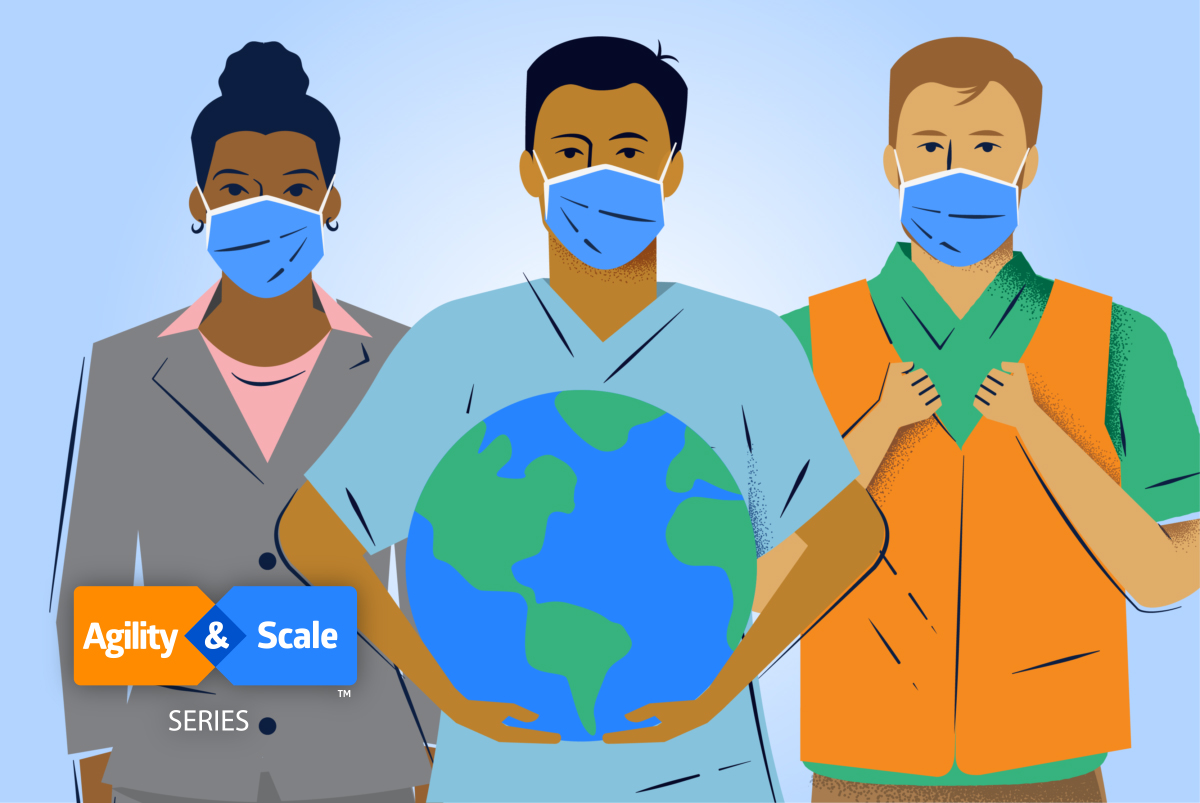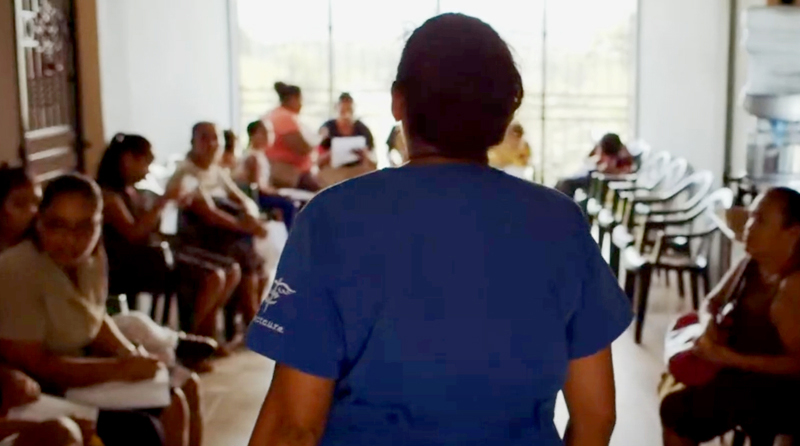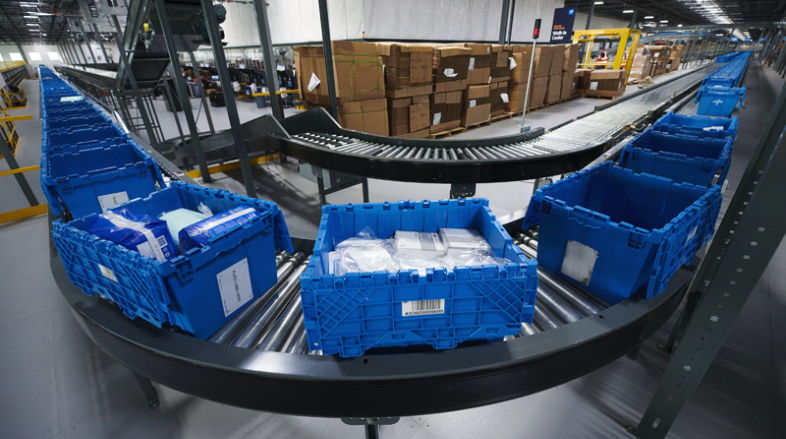How healthcare can combat climate change and build a resilient supply chain
Now’s the time to factor sustainability into your sourcing decisions.

In the wake of the COVID-19 pandemic and on the cusp of another public health crisis—climate change—the healthcare sector finds itself at once an essential part of the solution and yet a significant contributor to the problem. Think about it:
- Climate change is the world’s most looming public health crisis or what the World Health Organization (WHO) calls the “single biggest health threat facing humanity.” According to WHO, climate change is expected to result in approximately 250,000 additional deaths each year between 2030 and 2050 and $2 billion to $4 billion in direct health costs (excluding health-determinants such as agriculture, water and sanitation) by 2030.1
- The U.S. health sector is the world’s highest emitter of greenhouse gases in both absolute and per capita terms, according to the Health Care Without Harm 2019 study. The lion’s share of carbon consumption—71 percent—comes from the supply chain and the energy required to manufacture, ship, and dispose of the pharmaceuticals, food, medical equipment and plastic packaging used by hospitals every day.2
- In an unprecedented joint statement last fall, more than 200 medical journals from around the world, including The Lancet, The New England Journal of Medicine and the British Medical Journal, warned that the rapidly warming climate is the “greatest threat” to public health and called on global leaders to act with urgency in cutting heat-trapping emissions. “No temperature rise is ‘safe’,” the editorial says. “In the past 20 years, heat-related mortality among people over 65 years of age has increased by more than 50 percent.”3
“Healthcare providers are already seeing firsthand the increasing toll that extreme heat or exposure to toxins is having on people. Yet as health systems continue to meet the demands of one public health crisis and brace for another, they need support in not being part of the problem.”

Francesca Olivier
Senior director, environmental, social, governance (ESG) and strategic content for Medline
This article is the second in a series of three articles focusing on how sustainability and community impact create a more resilient healthcare supply chain. (The first explored what global health can teach us about supply chain resiliency and the third will address social determinants of health in our communities.)
COVID’s silver lining
If there are silver linings to be found in the COVID pandemic, one is that it taught the healthcare sector in real time and in practical terms what we knew in theory about public health—that it’s necessary to tend to the whole (community) so that we can best care for the individual (patient). Another is that COVID placed a spotlight on the extreme vulnerability of the healthcare supply chain and forced healthcare to think out of the box (literally) when it comes to sustainability and resiliency.
COVID-19 forced hospitals to reuse critical equipment—nurses kept masks in paper bags to reuse the next day, doctors wore their isolation gowns more than once. There was a behavioral shift toward reusable products at a time when all of our senses were heightened regarding infection prevention.
With much of the healthcare sector reviewing its supply chain strategies and practices since the onset of the pandemic, now’s a good time for health systems to re-evaluate their contributing role to climate change, and grapple with how best to build more sustainable supply chains beyond proactive waste reduction programs and LEED certification.
But no one health system can do it alone, and they don’t necessarily have the time or visibility to see just how critical sustainable programs are in helping them reduce waste, conserve energy and still lower costs. Medline has invested heavily in reducing its environmental impact and is helping healthcare systems achieve their sustainability goals by:
- Developing programs to reprocess, reuse and recycle used medical supplies
- Eliminating unnecessary packaging waste
- Walking the talk through programs focused on reducing our own carbon footprint
Here are some of the many ways we’re doing this:
Recycling and reprocessing
Hospitals produce more than 5 million metric tons of waste each year.4 But there are plenty of opportunities for hospitals to reduce their carbon footprint. With limited time and resources only made worse by the pandemic, you can make a significant impact by starting with the operating room, which accounts for 30 percent of hospital waste.
4 ways Medline is helping health systems factor reusable products and sustainable materials into their purchasing decisions

Medical device reprocessing. For more than 20 years, Medline ReNewal has been reprocessing single-use devices that clinicians typically otherwise throw away, restoring them to like-new condition. Demand is such that the Redmond, OR facility—which cleans, sorts, sterilizes and repackages items for reuse—is doubling in size.

Surgical instrument reprocessing. A user-friendly recycling and reprocessing program for Medline’s Centurion products are an eco-friendly alternative for disposal and helps decrease red bag waste costs. Medline provides collection containers and all the necessary shipping materials for returning instruments for reprocessing, and in turn, partners receive a rebate check for participating.

Surgical glove recycling. Medline transforms exam gloves into clean, renewable energy through its Waste-to-Energy Gloves program. Since 2018, when the program was started, more than 3,600 pounds of exam gloves from 23 different partners have been converted into clean energy.

Towel repurposing and curtain recycling. Medline works with partners to collect and repurpose operating room towels for non-healthcare use and is exploring a program that will allow partners to turn in their disposable cubicle curtain and have them recycled into new ones.
Sustainable packaging
Across the organization, Medline has reduced packaging of many products to bring down costs and minimize use of raw materials. Recycled or renewable materials have been integrated into packaging, including switching to 100 percent recycled polyester for pallet wrap; using corrugated cardboard packaging made from straw, grass and sugarcane; and using corrugate made from recycled wood pulp and/or using virgin wood pulp that’s sustainably sourced. Reusable totes are used for repack and LUM (logical unit of measure) deliveries as well as reusable pallets.
To further conserve raw material and energy resources, in 2020, Medline launched a Sustainable Packaging Lab, a cross-functional team of research and development, sustainability, operations and design experts and engineers, all focused on reimagining the way products are packaged and delivered. Two of the major projects revolve around cold chain shipping and chipboard pallet sheets. For more information on these projects, visit Medline.com.
In just one year, the lab’s efforts have resulted in more than 510,000-pound reduction in packaging-related waste, earning it a 2021 Sustainability, Environmental Achievement and Leadership (SEAL) Business Sustainability Award in the category of Environmental Initiatives. It’s now on track to reach 1 million pounds of diverted reduced waste by the end of 2022.
Medline received the 2021 Sustainability, Environmental Achievement and Leadership (SEAL) Business Sustainability Award in the category of Environmental Initiatives. It’s now on track to reach 1 million pounds of diverted reduced waste by the end of 2022.
Over 6 million
devices reprocessed in 2021 (= 40 million water bottles)
Over 1 million
pounds of waste diverted from landfills
Over
100,000
pounds of instruments (= 271,264 iPhones) diverted in 2021
Green product portfolio
Even if they have the willingness, materials managers—swamped by the number of SKUs they need to assure have been delivered and stocked in the right place at the right time throughout their health system on any given day—may not have the time to source products that are more friendly to the environment.
Medline offers a Green Product Portfolio that streamlines the process for healthcare providers who are seeking sustainable alternatives. This includes alternative cleaning products that don’t have harsh chemicals, responsibly manufactured products that incorporate recycled materials or less packaging, and products meeting globally recognized environmental certifications, including Green Seal Certified®, Oeko-Tex® and FSC® 50. We created these products based on guidance from the Federal Trade Commission, Kaiser Permanente’s 23 EPP Purchasing Guidelines, Practice Greenhealth and the Environmental Protection Agency.
Efficient transportation
With distribution centers worldwide, including more than 30 in North America, Medline had an enormous opportunity to implement changes to reduce our carbon footprint when it comes to transportation. They have been an Environmental Protection Agency (EPA) SmartWay® Transport partner for the past 10 years, tracking and sharing information on the company’s fuel use and freight emissions. As such, they’ve reduced their carbon footprint on the road by operating vehicles more fuel efficiently, investing in technology to monitor driving performance, and streamlining deliveries and transportation services whenever possible.
- Fuel efficiency standards and incentives. MedTrans, Medline’s private fleet of 105 trucks, delivers 96 percent of prime vendor hospital sales and more than 75 percent of all Medline sales. Across-the-board fuel and emissions-reducing standards and practices have been instituted. These include dynamic route planning to reduce miles and improve trailer utilization; purchasing and utilizing the most efficient diesel-fueled trucks; and incentivizing drivers to avoid hard stops, heavy acceleration, high speeds and long periods of idling. Engine idle measures have been reduced to less than 1 percent in comparison to the industry standard of 20 percent.
- Electric semitruck pilot program. In partnership with Volvo Trucks North America, MedTrans is utilizing a fully electric semitruck to make deliveries to hospital systems in Southern California. In less than one year, this truck has saved 8.9 metric tons of carbon dioxide emissions—equal to the energy used to power 1.1 homes for one year, charge 1,077,731 smartphones, or burn 9,793 pounds of coal.
- Third-party distribution partners. UPS, FedEx and LTL are brought in as third-party distributions partners as needed, distributing, who distribute 25 percent of our sales. These major vendor partners are all EPA SmartWay partners.
Energy efficiency
Solar energy is a key component of Medline’s sustainability efforts, launched approximately 10 years ago to conserve natural resources, such as energy and water, and limit landfill waste. From 2020 to the first quarter of 2022, Medline tripled its solar investment from $12.6 million to $33.3 million.
Solar panels have been installed at Medline’s distribution center in Uxbridge, MA, and now have nearly 3 million square feet of solar-powered rooftop in eight facilities in the United States and around the world, including our headquarters building in Northfield, IL. Solar panel installations are also underway at Medline facilities in Montgomery, NY and Perryville, MD.
To date, solar-generated energy at Medline facilities has resulted in an estimated carbon emission reduction of 27,941 metric tons—equivalent to removing 6,077 passenger vehicles from the road for one year or burning more than 3 million gallons of gasoline.
Improving energy efficiency in our facilities:
- LEED certification. Approximately 98% of Medline’s distribution centers in the U.S. are LEED certified or pending certification, representing over 19.2 million square feet out of total 19.7 million square feet All new Medline buildings throughout the world are constructed to meet LEED certification standards. Corporate buildings, with one exception, along with customer service centers are also LEED certified. And all new Medline buildings throughout the world are constructed to meet LEED certification standards.
- ISO global environmental standards. Nine Medline facilities are certified according to ISO 14001, a set of global environmental standards set by the International Organization for Standardization (ISO).
Key takeaway
Health systems are facing two musts in rethinking their supply chain strategies: First, they must prioritize resiliency in anticipation of the next public health crisis—climate change—while still managing their way through COVID. Secondly, they must reckon with their own role in the crisis as one of the world’s highest emitters of greenhouse gases by seriously factoring sustainability into the purchasing equation.
Medline can help them achieve both objectives by listening to their challenges and offering sound and ever-evolving solutions that are focused on reducing waste and conserving energy, all the while controlling or lowering costs for their organizations and the people they serve.
References:
- https://www.who.int/health-topics/climate-change#tab=tab_1
- https://noharm-global.org/sites/default/files/documents-files/5961/HealthCaresClimateFootprint_092319.pdf
- https://www.npr.org/2021/09/07/1034670549/climate-change-is-the-greatest-threat-to-public-health-top-medical-journals-warn
- https://practicegreenhealth.org/topics/waste/waste-0




